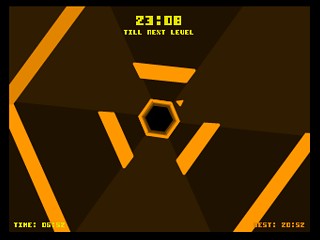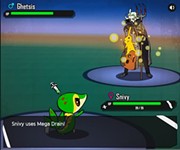This Week's Waste of Time
What makes a game a Waste of Time?
By James Renovitch, 4:15PM, Mon. Apr. 9, 2012
This week, we talk about what makes a game a waste of time. All as a response to the lengthy New York Times Magazine article about "stupid games" (their words, not mine) like Angry Birds. Somewhere in there is a browser game you can play. Feel free to skip the pontificating and just play the game. It's called Hexagon. Otherwise, click through.
The majority of the NYT article discusses what it is about games like Tetris and, more recently, the slew of casual games for hand-held devices that makes them so addictive. The writer does a fine job to that end, but makes a few sweeping generalizations that probably don't sit well with some game designers. The author lumps simple, arcade-style games together for simplicity's sake at the expense of precision. I can understand this tendency being that I write about games for a general audience as opposed to a blog like Gamasutra or Joystiq that assumes the reader has a certain base knowledge of video games. There's only so much background information one can include in an article before the interest of non-gaming readers wanes.
I'm going to do some oversimplifying myself: My litmus test for whether or not a game is "stupid" is whether or not it respects my time and effort. If a game (I'm looking at you Farmville) rewards me for little more than clicking a certain number of times and assumes a virtual prize is enough to keep me coming back, I am going to be indignant at the very least. A game that offers a challenge but also doesn't make me feel like I'm running in place keeps my interest. And that's half the battle.
Take for example a recent release from repeat Waste of Time "winner" Terry Cavanaugh (check out his other games here and here). Hexagon is old-school arcade repetition at its best with various shaped walls always closing in on you. (You should play it now so the rest of this paragraph makes more sense.) But what makes it worth the time? While frustrating to the core, Hexagon's obstacles are different every time, so pure memorization doesn't help. Each game only lasts about 30 seconds, but the satisfaction of finally beating a previous high score can't be understated. What keeps you coming back is the feeling of progressing a bit farther or understanding the game's mechanics more fully. Didn't beat your previous time? At least you've mastered a certain control or find yourself thinking a few moves ahead rather than constantly scrambling to survive. That sort of inherent reward system is programmed into a game by a skilled developer, and that's one of the things that makes repeat visits to a game worthwhile.
If people take anything from the Times Magazine article (and to a lesser extent this blog) I hope they look a bit closer at the games they play, and make sure the developer is showing them due respect. We deserve it.
A note to readers: Bold and uncensored, The Austin Chronicle has been Austin’s independent news source for over 40 years, expressing the community’s political and environmental concerns and supporting its active cultural scene. Now more than ever, we need your support to continue supplying Austin with independent, free press. If real news is important to you, please consider making a donation of $5, $10 or whatever you can afford, to help keep our journalism on stands.
James Renovitch, Feb. 8, 2013
James Renovitch, Oct. 11, 2012
May 23, 2025
May 16, 2025
TWWT, Hexagon, Terry Cavanaugh, Stupid Games, New York Times











